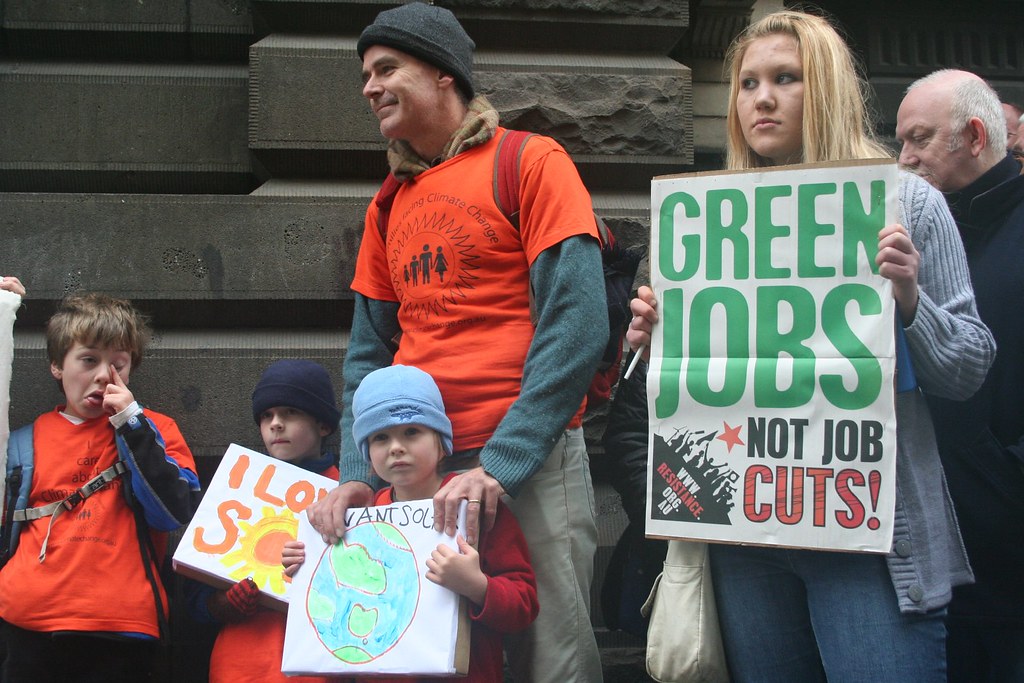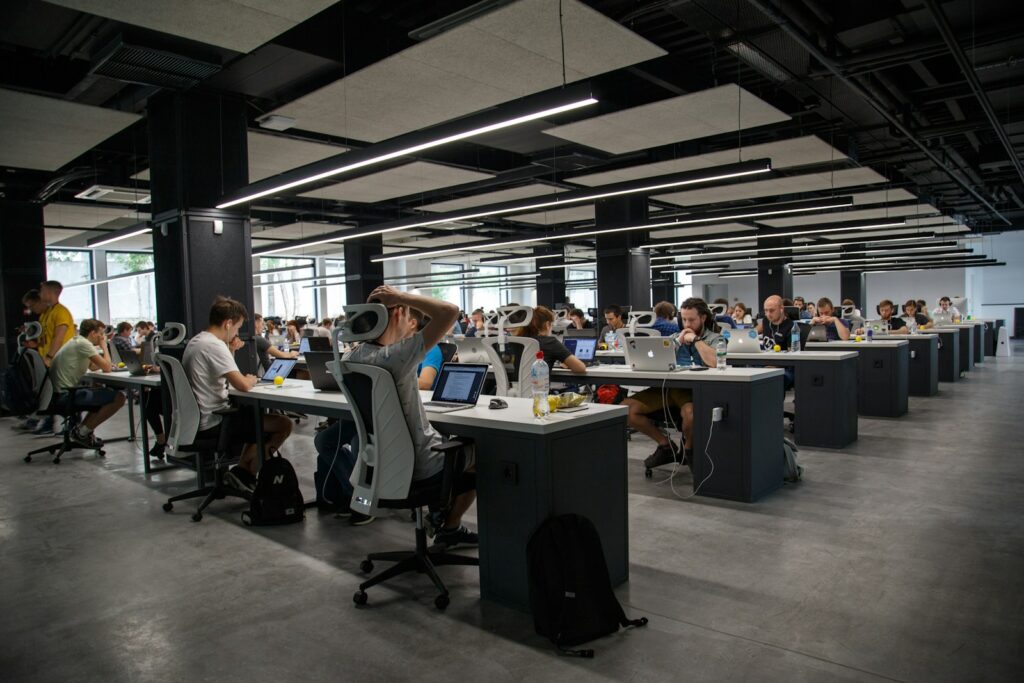undefined

The United States is currently navigating a pivotal moment in its labor market, witnessing a significant uptick in job separations that echoes the tumultuous early days of the COVID-19 pandemic. Recent reports paint a striking picture, indicating that job cuts in July have soared by an extraordinary 140% when compared to the same period just one year prior. This surge underscores a dynamic and evolving economic landscape, demanding close examination of its underlying causes and potential long-term implications.
Indeed, the data provides a sobering look at the scale of these changes. Employers disclosed that a substantial 62,075 layoffs occurred last month, a figure reported by Newsweek based on the latest findings from the outplacement firm Challenger, Gray & Christmas. This represents a notable 29% increase from June, significantly surpassing the post-pandemic average for July, which stood at 23,584 between 2021 and 2024.
The current monthly total even exceeds the average of 60,398 recorded over the past decade, according to the report. This elevated level of job cuts signals a departure from more recent trends, marking a period of intensified corporate adjustments and strategic realignments across various sectors of the economy.
The year-to-date total for 2025 has now reached a staggering 806,383 cuts. This figure alone marks a 75% increase over the same period in 2024 and has already surpassed the entirety of layoffs recorded last year by 6%, as reported by Newsweek. It represents the highest total for the January through July period since 2020, a year when the unprecedented shutdowns pushed job losses beyond 1.8 million.

In the first half of 2025 alone, companies nationwide announced a remarkable 744,308 job cuts. This high tally has not been observed since the initial six months of 2020, a period when employers reduced nearly 1.6 million jobs in direct response to the widespread disruptions brought about by the pandemic.
At the forefront of these significant shifts stands artificial intelligence, emerging as a major force driving a considerable portion of the recent layoffs. Automation and artificial intelligence have been directly linked to more than 20,000 job cuts this year, with a substantial share of over 10,000 of these occurring in July alone, as detailed in the Newsweek report.
Industry experts are carefully observing this evolving dynamic. Fabian Stephany, an assistant professor for AI and work at the University of Oxford, has provided valuable insights, suggesting that the latest round of layoffs might be attributable to a combination of “late-cycle cost discipline and post-pandemic normalization.” He cautions against interpreting these trends as an immediate sign of a full-scale employment downturn.
Read more about: Donald J. Trump: A Comprehensive Profile of the 45th and 47th U.S. President, Businessman, and Media Personality

Stephany further elaborated on the strategic motivations behind current corporate actions, stating that “Many firms are correcting for the overhiring of 2021 to 2022 while protecting margins through productivity gains, some of which are enabled by automation.” This perspective highlights a proactive approach by companies aiming to optimize operations and enhance efficiency in a changing economic climate.
It is particularly noteworthy, as Stephany pointed out, that AI’s immediate impact is most pronounced on “transactional, routine, and standardized work—particularly in junior roles.” This suggests that roles involving repetitive tasks are the first to be reshaped or replaced by intelligent automation, leading to a re-evaluation of staffing needs within organizations.
Adding to this understanding, Jason Leverant, the COO and president of AtWork Group, categorized the types of jobs susceptible to automation. He noted that automation primarily impacts positions that fall into what he described as the “Three D’s”: dull, dirty or dangerous. Importantly, he observed that many white-collar positions fitting the “dull” category are already being actively replaced by sophisticated AI tools.
Both Leverant and Stephany anticipate that artificial intelligence will continue to significantly reshape the labor market throughout the current year. Stephany offered a nuanced prediction for this ongoing transformation, stating, “The likely path is steady, incremental reshaping of roles through attrition and slower hiring, rather than sharp spikes in AI-related layoffs.” This outlook suggests a gradual evolution rather than an abrupt disruption.
Read more about: Donald J. Trump: A Comprehensive Profile of the 45th and 47th U.S. President, Businessman, and Media Personality
While AI undeniably plays a substantial role, the rise in layoffs this year is not solely attributable to technological advancements. A complex interplay of various other factors, including significant government downsizing and widespread corporate restructuring, also contributes to the current trends. Public agencies, technology firms, and retailers, in particular, are at the forefront of these extensive job reductions, according to the Newsweek report.
Federal agencies have experienced a particularly severe impact this year, a direct consequence of a deliberate push by the Department of Government Efficiency (DOGE) under US president Donald Trump to drastically cut costs. This initiative has resulted in a massive number of layoffs from the federal government, totaling 292,294 since the year commenced.
Andrew Challenger, a senior vice president and labor expert at Challenger, Gray & Christmas, confirmed the profound impact of these federal policies. He remarked, “We are seeing the federal budget cuts implemented by DOGE impact nonprofits and health care in addition to the government.” This highlights the extensive reach of the government’s downsizing efforts, affecting entities beyond direct federal employment.
DOGE’s activities have been the leading factor contributing to the rise in layoffs, accounting for nearly 287,000 cuts so far this year, as reported by Challenger, Gray & Christmas. Firings instigated by this task force led to a significant spike in federal worker reductions earlier this year across numerous agencies, including the Department of Health and Human Services, Department of Education, and USAID.
Read more about: Donald J. Trump: A Comprehensive Profile of the 45th and 47th U.S. President, Businessman, and Media Personality

Beyond direct firings, thousands of employees also opted to depart through a deferred resignation program, contributing to the overall reduction in the federal workforce. States situated in the East and Southeast have experienced the most significant surge in layoffs, with an increase exceeding 220% from a year ago, as per Challenger, Gray & Christmas data.
The firm’s report explicitly attributes this dramatic rise to the concentrated nature of federal reductions, stating, “This dramatic rise is largely due to significant reductions at federal agencies headquartered in Washington, D.C.” This geographical concentration underscores the focused impact of the government’s efficiency drive.
The ripple effects of DOGE’s activities have extended beyond federal employees to encompass other states and industries heavily reliant on government funding, including a substantial impact on nonprofit groups. So far this year, nonprofit organizations have announced approximately 17,000 job cuts, a stark increase of 407% from the same period last year, according to the new data.
Economic uncertainty stands as another formidable contributor to the escalating layoff figures. The reason cited for approximately 170,000 job cuts so far this year explicitly references broader economic conditions, including persistent inflation, shifts in consumer demand, and global uncertainty, according to the report.
Read more about: Donald J. Trump: A Comprehensive Profile of the 45th and 47th U.S. President, Businessman, and Media Personality

An economic slowdown coupled with rocky financial markets has prompted companies to shed more than 154,000 jobs this year, according to Challenger, Gray & Christmas. These challenging conditions compel businesses to recalibrate their operations and staffing levels in response to a less predictable financial environment.
Tariff policies enacted by the Trump administration are also beginning to exert their influence on the job market. Challenger Gray directly attributes 2,000 layoffs so far this year to stepped-up U.S. tariffs on foreign imports, highlighting a specific economic policy contributing to job reductions across certain industries.
Retailers, in particular, have borne a significant brunt of these economic pressures, eliminating nearly 80,000 jobs this year, an alarming increase of 255% from the first half of 2024. This sector’s vulnerability is clearly articulated by Andrew Challenger.
Read more about: The July CPI Report: A High-Stakes Wager Where the Economy Faces Challenges, No Matter the Outcome

Andrew Challenger, senior vice president of Challenger, Gray & Christmas, emphasized the precarious position of this industry, stating in a statement that “Retailers are one of the hardest hit business sectors by tariffs, inflation and uncertainty.” He issued a cautionary outlook, adding, “If consumer spending continues to fall, it could mean more job losses in this industry.”
Corporate restructuring initiatives also account for a significant portion of the recent layoffs. Businesses are undergoing fundamental changes, driven by factors such as store or plant closures and bankruptcies. These operational overhauls often lead to substantial workforce reductions as companies adapt to new market realities or financial distress.
Several prominent companies have filed for bankruptcy this year, including Del Monte, At Home, and 23andMe. These high-profile cases underscore the intense pressures faced by firms across diverse sectors, leading to significant job losses as part of their restructuring or dissolution processes.
Read more about: The Enduring Gravitational Pull: How Republicans Consistently Align with Donald Trump’s Evolving Vision

Technology and telecom companies, for instance, are actively reducing their workforces as they strategically pivot investments toward the burgeoning fields of artificial intelligence and cloud infrastructure. This shift reflects a strategic reallocation of resources and talent to align with emerging technological priorities, even if it entails near-term job reductions in traditional areas.
The private sector layoffs have been particularly concentrated in industries facing structural pressures. Beyond technology and retail, other sectors experiencing record-high job cuts include finance, business services, and transportation. In these areas, companies are scaling back capacity after periods of significant expansion during the pandemic era, adjusting to more normalized demand levels.
Despite the clear surge in layoffs across various industries and government sectors, the broader employment picture in the United States maintains a surprising degree of resilience. The nation’s unemployment rate, for instance, remains historically low at 4.2%. This figure suggests that while some areas are shedding jobs, other parts of the economy continue to absorb workers, maintaining a relatively tight labor market.
Read more about: Era of Free Streaming Password Sharing Nears End as Max Launches Paid Option, Following Netflix and Disney+

Furthermore, hiring has remained steady even as job cuts rise, presenting a somewhat paradoxical situation that economists are closely monitoring. This dichotomy indicates a dynamic labor market where job creation and destruction occur simultaneously, albeit with a current tilt towards increased separations.
Observers are keenly awaiting further insights into these trends. The Department of Labor is scheduled to release its June employment report in the coming days, on Thursday. Economists, based on forecasts from financial data provider FactSet, are anticipating payroll gains of approximately 115,000 in May, which would offer additional context to the current employment landscape.
The current wave of layoffs across the U.S. this year has climbed to its highest level since the pandemic dramatically impacted the economy in 2020, as new labor data powerfully demonstrates. This challenging period is not defined by a single cause but rather by a confluence of powerful, transformative forces.
It is the collective impact of artificial intelligence adoption, the significant downsizing initiatives within the federal government, the pervasive economic uncertainties, and extensive corporate restructuring that is driving this complex phenomenon. The American workforce is navigating an intricate landscape of technological advancement, governmental policy, and market recalibration.
Read more about: Decoding Destiny: Which Zodiac Signs Are Truly Poised for Riches (And Which Face a Steeper Climb)?

This is not merely a moment of challenge, but a profound period of redefinition for the American labor market. It is a time when the very fabric of work is being reshaped by innovation and necessity, demanding adaptability from both employers and employees. The ongoing narrative of job cuts and labor market shifts is a testament to an economy in constant motion, ever-adjusting to a rapidly evolving global and technological environment.
Read more about: Innovation Nation: America’s Enduring Drive for Pioneering Technology and Unrivaled Global Influence
As we move forward, understanding these multifaceted drivers will be paramount for businesses, policymakers, and individuals alike. The dynamic interplay of AI, government action, and economic conditions continues to sculpt the future of work, presenting both formidable challenges and intriguing opportunities for innovation and growth within the nation’s vibrant economic engine.


:max_bytes(150000):strip_icc():focal(749x0:751x2)/Nicole-Kidman-Sunday-Urban-tout-100224-5b8bcfd7b9d341c7a5848dc82e55581c.jpg)

